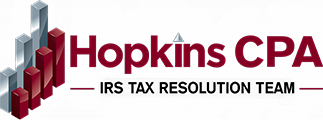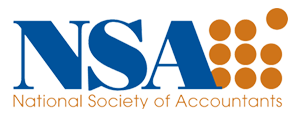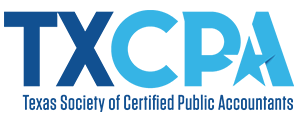Are you part of the 46% of 401(k) investors who are unaware of where your money is going? According to a recent CNBC survey, nearly half of all participants in this critical retirement savings plan might be in the dark about their investments.
The 401(k) plan, named after a section of the U.S. tax code, offers employees a tax-advantaged way to save for retirement, typically with matching contributions from their employer. However, not fully understanding the nuances of this account can significantly affect its potential benefits.
This lack of awareness isn’t always detrimental—sometimes it can shield investors from the stress of market dips. Yet, the real impact lies in missed opportunities for maximizing returns and adapting investing strategies to personal retirement goals.
We encourage you to read on and explore this blog further. Grasping the full spectrum of pros and cons associated with your 401(k) plan will not only empower you with valuable financial knowledge but also equip you to make decisions that best suit your long-term financial health and retirement objectives.
What is a 401(k)?
A 401(k) is a type of retirement savings plan that offers investors tax benefits. The defined contribution plan offered by employers, the 401(k), is named after a section of the Internal Revenue Code of the United States. Contributions made by employees may be matched by the employer; under certain plans, this is required.
401(k)s come in two main types: Traditional and Roth.
- Traditional 401(k): A retirement savings plan where contributions are made with pre-tax dollars, reducing taxable income, and investments grow tax-deferred until withdrawal during retirement.
- Roth 401(k): A retirement savings plan where contributions are made with after-tax dollars, allowing tax-free withdrawals in retirement, including investment earnings, provided certain conditions are met.
Importance of understanding the pros and cons of 401(K) plans:
- Maximizing Retirement Savings: Knowing the benefits like employer matches and tax advantages helps boost retirement funds effectively.
- Tax Efficiency: Understanding pre-tax contributions and tax-deferred growth minimizes tax burdens during work years and in retirement.
- Long-Term Financial Planning: Recognizing limitations like limited investment options allows for comprehensive retirement strategies.
- Achieving Financial Goals: Aligning retirement savings strategies with broader financial objectives ensures goal attainment.
- Diverse Investment Opportunities: Capitalizing on a variety of asset classes within a 401(k) plan enhances portfolio diversification.
- Automatic Savings Mechanism: Employing automatic deductions simplifies retirement savings and fosters consistency.
- Employer Contributions: Leveraging employer matches boosts retirement savings and accelerates wealth accumulation.
- Potential for High Fees: Understanding fee structures within 401(k) plans ensures cost-effective investment management.
Advantages of 401(k) Plans
401(k)s offer workers many advantages, such as tax breaks, employer contributions, high limits on how much you can contribute, the ability to keep contributing as you age, and protection from creditors. Let’s explore each of these benefits in more detail.
401(k) Tax Benefits
- Pre-Tax Contributions
- Contributions to traditional 401(k) plans are made with pre-tax dollars.
- You can deduct these contributions from your taxable income in the year they are made, which reduces the amount of income tax you owe for that year.
- Note: This benefit does not apply to Roth 401(k) plans, which are funded with after-tax dollars.
- Tax-Deferred Growth
- The earnings within your 401(k), such as dividends and capital gains, grow tax-deferred.
- This means you do not pay taxes on the earnings until you withdraw them, typically during retirement.
- Tax Bracket Considerations
- If you find yourself in a lower tax bracket during retirement than when you were making contributions, withdrawing the funds can lead to tax savings.
- This is particularly advantageous for those currently in higher tax brackets, as the immediate reduction in taxable income can provide significant tax relief
401(k) Employer matching contributions
Some employers match the amount you put into your 401(k) and might also share a portion of the company’s profits with you. If your company offers this, it’s wise to take advantage of it since it’s essentially free money with minimal risk.
Employers can match your contributions in several ways:
- A fixed percentage of your earnings up to a certain amount, for example, a 50% match up to 6% of your salary.
- A tiered match, such as 100% on the first 4% of your salary and then 50% on the next 4%.
- A fixed percentage up to the IRS contribution limits, for example, 50% of all your contributions.
Example: If earning $45,000 and contributing 6% ($2,700), the employer might add an extra 50% ($1,350), totaling $4,050 by year-end, excluding investment performance.
401(k) Contribution Limits
You can save a lot more in a 401(k) each year compared to an IRA. For 2023, you can contribute up to $22,500, and in 2024, up to $23,000. People who are 50 years of age or older can also make an extra catch-up contribution of $7,500 for both years.
There are also overall limits to how much you and your employer can contribute together. The most that can go into your 401(k) annually is the lesser of:
For those eligible for catch-up contributions and aged 50 or older, these totals increase to $73,500 in 2023 and $76,500 in 2024.
401(k) Contributions Age Limit
Previously, individuals couldn’t contribute to traditional and Roth IRAs after age 70½ as of the 2019 tax year. Starting in 2020, the IRS removed the age limit on making regular contributions to these IRAs.
- 401(k) Age Rules: The same no-age-limit rule that applies to IRAs also extends to 401(k) plans. Individuals can continue contributing to their 401(k) as long as they are employed.
- Exemption from RMDs While Working: Employees who own less than 5% of the company are not required to take mandatory distributions from their 401(k) plans while they are still working.
Shelter From Creditors
- General Protection Under ERISA: 401(k) plans are covered by the Employee Retirement Income Security Act (ERISA), which offers robust protection against judgment creditors, shielding your retirement funds during financial troubles.
- Protection Against Federal Tax Liens: 401(k)s generally provide some level of defense against federal tax liens—claims made by the government for unpaid taxes. Because these plans are officially owned by your employer and not by you personally, it complicates the IRS’s ability to place a lien directly on these accounts.
- Exceptions for IRS Seizures: Despite the protections, the IRS retains the authority to seize assets from your 401(k) under certain conditions, depending on the specific terms of the plan and the nature of the tax debt.
401(k) Automatic Savings Mechanism
- Convenient Contributions
- 401(k) plans automatically deduct a predetermined portion of your paycheck, streamlining the process of saving for retirement. This feature eliminates the need to manually transfer funds, ensuring that contributions are consistently made without fail.
- In 2020, about 62% of businesses with a 401(k) plan utilized automatic enrollment, demonstrating its growing popularity and acceptance among employers.
- Savings Consistency
- By automatically setting aside funds for retirement before they hit your bank account, this mechanism promotes financial discipline, reduces the temptation to spend, and can significantly increase long-term savings.
- The effectiveness of this approach is underscored by data from Vanguard Group, which found that 92% of new hires were still actively saving in their 401(k) plans three years after being automatically enrolled, compared to just 29% in plans with voluntary enrollment.
401(k) Investment Growth Potential
- Popular Retirement Savings Vehicles:
- Widely Used: One of the most common investment vehicles that Americans use to save for retirement is a 401(k), demonstrating its popularity and trustworthiness among workers.
- Employer-Sponsored Benefits: The 401(k) is an employer-sponsored plan that provides a tax-advantaged way to save for retirement, further enhancing its appeal.
- Diverse Investment Opportunities:
- Wide Range of Assets: Contributions to a 401(k) can be invested across a variety of asset classes, including stocks, bonds, and mutual funds.
- Tailored Risk Management: This diversity allows for personalized risk management and the potential for higher returns based on market performance.
- Enhanced Compounding Effects:
- Tax-Deferred Growth: The tax-deferred nature of 401(k) investments means that returns such as dividends, interest, and capital gains reinvest without being taxed annually.
- Maximize Retirement Savings: This compounding effect can significantly enhance the growth potential of the investment portfolio, maximizing the amount available upon retirement.
- Contribution Limits:
Disadvantages of 401(k) Plans
Limited Investment Options
- Restricted Choices:
- Limited Selection: 401(k) plans often offer a predefined selection of mutual funds and sometimes exchange-traded funds (ETFs), but typically do not include individual stocks, bonds, or real estate investments.
- Constraints on Personalization: This can restrict investors from tailoring their portfolio to include niche market sectors or specific investment opportunities that may align better with their individual investment strategies.
- Lack of Flexibility:
- Missed Opportunities: The limited scope of investment choices can prevent participants from taking full advantage of diverse market opportunities, such as emerging markets, certain commodities, or advanced financial instruments like derivatives.
- Limited Active Management Options: Investors looking for more actively managed investment options or those interested in non-traditional assets like cryptocurrencies might find 401(k) offerings insufficient.
Early Withdrawal Penalties
- Financial Consequences: Taking money out of your 401(k) before age 59½ usually incurs a 10% penalty plus regular income tax.
- Discourages Early Access: These penalties aim to discourage early withdrawals, ensuring retirement savings are preserved.
- Mandatory Withholding: About 20% of the withdrawn amount is typically held for federal taxes, reducing the actual amount received.
- Loss of Compounding Benefits: Early withdrawals mean missing out on potential growth over time, impacting overall retirement savings.
- Potential Impact on Financial Aid: Early withdrawals may be counted as income for college financial aid eligibility, potentially reducing aid.
- Loan Defaults: Failing to repay a 401(k) loan results in penalties and taxes, and leaving a job without repaying the loan can have similar consequences.
Vesting Schedules
Vesting means ownership. It is a feature of retirement plans that determines when participants gain full possession of employer-matching contributions. With a 401(k), an employee pays a percentage of each paycheck directly into an investment account, and the employer may match part or all of that contribution.
- Employer Contributions:
- Types of Plans with Vesting Schedules: Vesting schedules are commonly found in traditional 401(k) plans that offer employer-matching contributions or non-elective contributions. Profit-sharing components included within 401(k) plans may also come with vesting schedules.
- Vesting Schedule Variations: These schedules can vary, with some being immediate (100% vesting upon contribution), while others may be graded (vesting increases over time) or cliffed (100% vesting after 6 years).
- Potential Loss of Funds:
- Statistical Data on Losses: According to the Internal Revenue Service (IRS), a significant turnover in a company, defined as a turnover rate of 20% or more, can trigger a partial termination of the 401(k) plan. In cases of partial termination, the IRS mandates that “all affected participants must be fully vested in all amounts credited to their accounts in the plan.” This means that during such events, employees stand to retain all employer-contributed funds, regardless of the original vesting schedule.
- Impact of Early Departure: Leaving a job before contributions are fully vested can lead to the loss of a substantial portion of the employer-contributed funds, which can impact an employee’s overall retirement savings. This underscores the importance of understanding your plan’s vesting schedule and considering career moves carefully in terms of these timelines.
Potential for High Fees
- Administrative and Management Fees:
- Plan Administration Fees: These are charged for the day-to-day operations of the plan, including record-keeping, legal, and accounting services.
- Investment Management Fees: Fees paid to the managers of the investment funds within the 401(k) for selecting and managing the investments.
- Individual Service Fees: These are charged for optional features available to plan participants, such as fees for processing loans from the 401(k) or hardship withdrawals.
- Can Reduce Returns:
- Impact of Fees on Returns: The various fees associated with a 401(k) can significantly reduce investment returns over time. For example:
- Expense Ratios: For a typical 401(k) plan, the expense ratio should be no higher than 2% and is more commonly in the 1.0% to 1.5% range. The lower the expense ratio, the better, as higher fees directly eat into profits
- Sales Charges (Loads): Some funds may have sales charges for buying or selling shares.
- Plan Administration Fees: This can be a flat fee per participant or based on a percentage of plan assets.
- Compound Effect of Fees: Even small differences in fees can translate into large differences in retirement savings over decades due to the compound effect. A higher fee structure can significantly eat into the potential growth of retirement funds, making it crucial for participants to understand all fees associated with their 401(k) plan.
Tips for Maximizing 401(k) Benefits
- Choose your own savings rate wisely.
- Take advantage of your employer’s 401(k) match.
- Stick around until you’re fully vested.
- Make the most of your tax benefits.
- Consider diversifying with a Roth 401(k).
- Avoid early withdrawals.
- Roll over your funds without paying hefty fees.
- Keep fees to a minimum.
- Spread your investments across different assets.
- Don’t forget about the required minimum distributions.
End Note!
Understanding the advantages and disadvantages of 401(k) accounts is crucial for securing a stable financial future.
About 70% of Americans contribute to retirement plans like 401(k)s, with significant variation by generation—75% of Millennials and 76% of Generation X save in these plans, compared to only 47% of Generation Z.
If you want to be a part of this percentage of proactive savers, it’s important to start by fully grasping what a 401(k) can do for you.
Begin contributing as early as possible, as even small amounts can grow significantly over time due to compound interest, and always try to maximize any employer contributions, as this is essentially free money towards your retirement.
If you’re looking to develop a solid retirement plan and feel you could use some guidance, professional advice is available. Hopkins CPA Firm is here to help you with your 401(k) retirement plans. Whether you’re starting to save or want to improve your current investments, we can offer the guidance and support you need. Learning about your retirement options now can help ensure a secure future.










